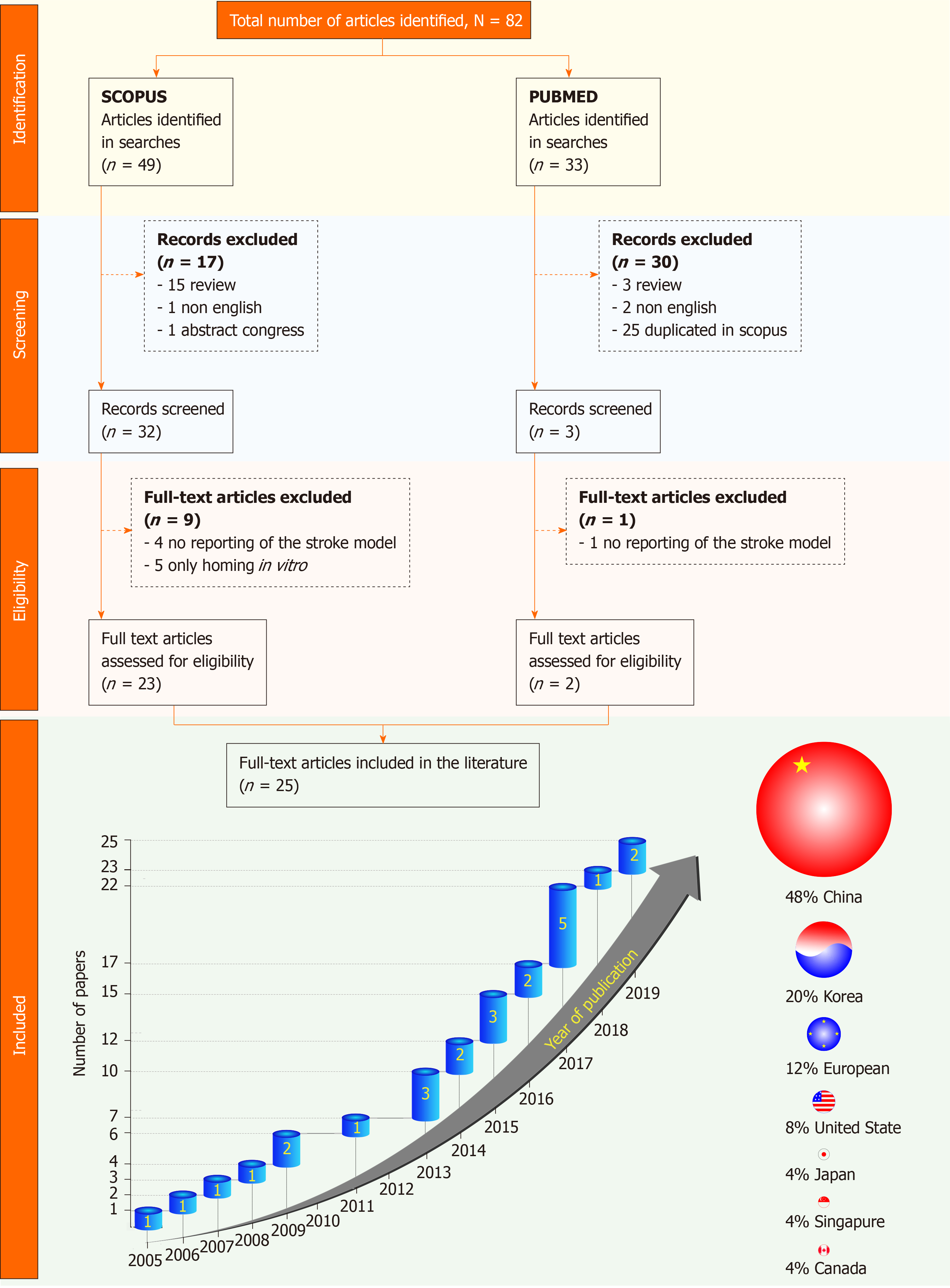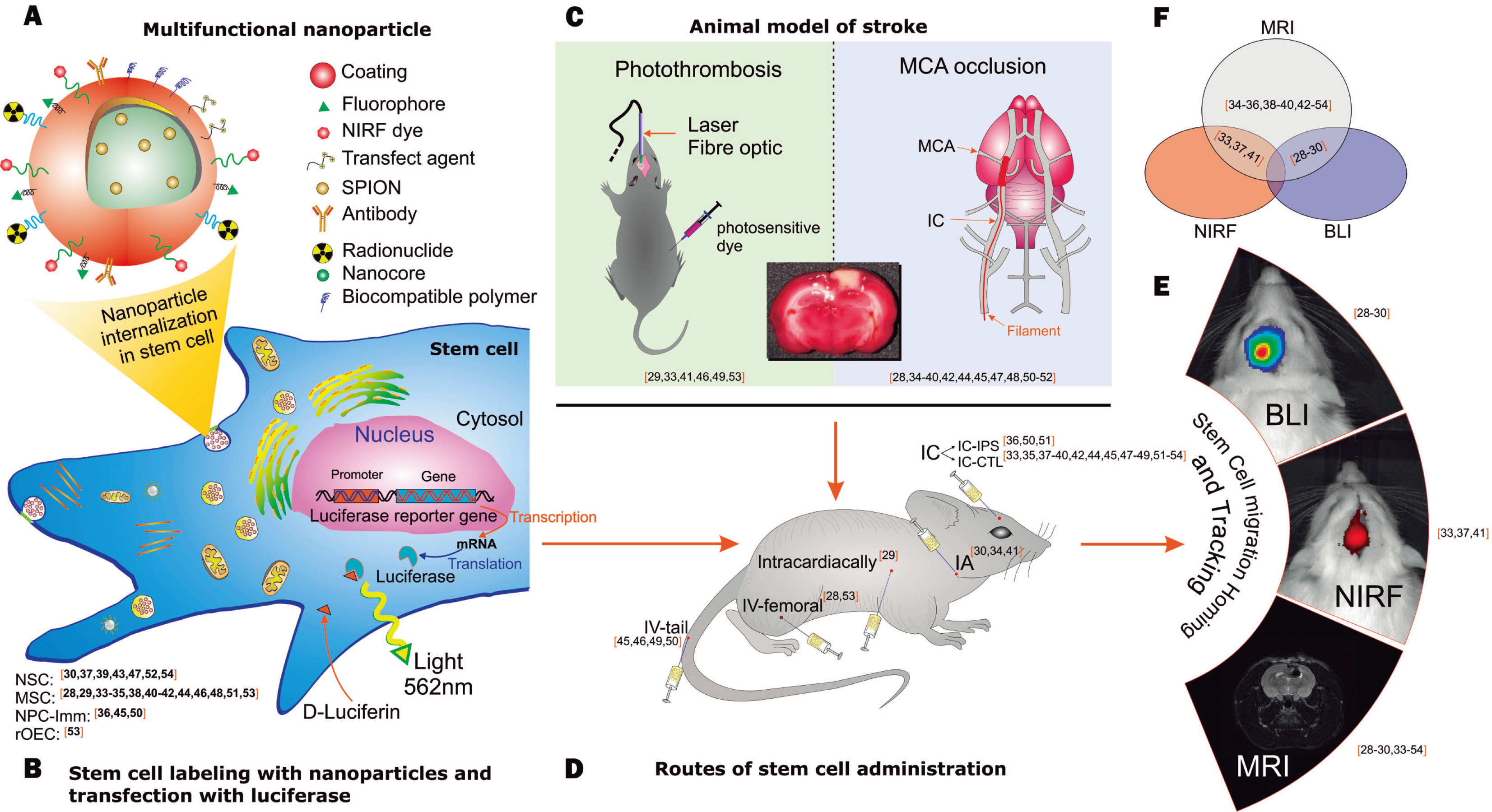Copyright
©The Author(s) 2020.
World J Stem Cells. May 26, 2020; 12(5): 381-405
Published online May 26, 2020. doi: 10.4252/wjsc.v12.i5.381
Published online May 26, 2020. doi: 10.4252/wjsc.v12.i5.381
Figure 1 The PRISMA flow diagram provides more detailed information regarding the process of study selection.
After the inclusion of studies, the first analysis focused on the publication year distribution; the graphic shows the number of studies per year and the distribution of the studies by the country in which the research was conducted.
Figure 2 Schematic illustration of the aspects of stem cell homing, tracking and therapeutic efficacy evaluated in stroke using nanoparticles in the selected studies included in this review.
A: The multifunctional nanoparticle characteristics; B: Characteristics of stem cells labeled with nanoparticles/contrast agents transfected with luciferase; C: Characteristics of the induction of the animal models of stroke; D: Routes of stem cell administration; E: Molecular imaging techniques of stem cell migration homing and tracking; F: The combined imaging techniques used in the stem cell homing analysis. MSC: Mesenchymal stem cells; NSC: Neural stem cells; NPC-Imm: Neural progenitor cell - immortalized; ESC: Embryonic stem cell; rOEC: Rat olfactory ensheathing cells; IV: Intravenous by tail and femoral veins; IA: Intra-arterial by intracarotid; IC: Intracerebral; CTL/IPS: Contralateral or ipsilateral of brain injury; BLI: Bioluminescence; NIRF: Near-infrared fluorescence; MRI: Magnetic resonance imaging; MCA: Middle cerebral artery.
- Citation: Nucci MP, Filgueiras IS, Ferreira JM, de Oliveira FA, Nucci LP, Mamani JB, Rego GNA, Gamarra LF. Stem cell homing, tracking and therapeutic efficiency evaluation for stroke treatment using nanoparticles: A systematic review. World J Stem Cells 2020; 12(5): 381-405
- URL: https://www.wjgnet.com/1948-0210/full/v12/i5/381.htm
- DOI: https://dx.doi.org/10.4252/wjsc.v12.i5.381










